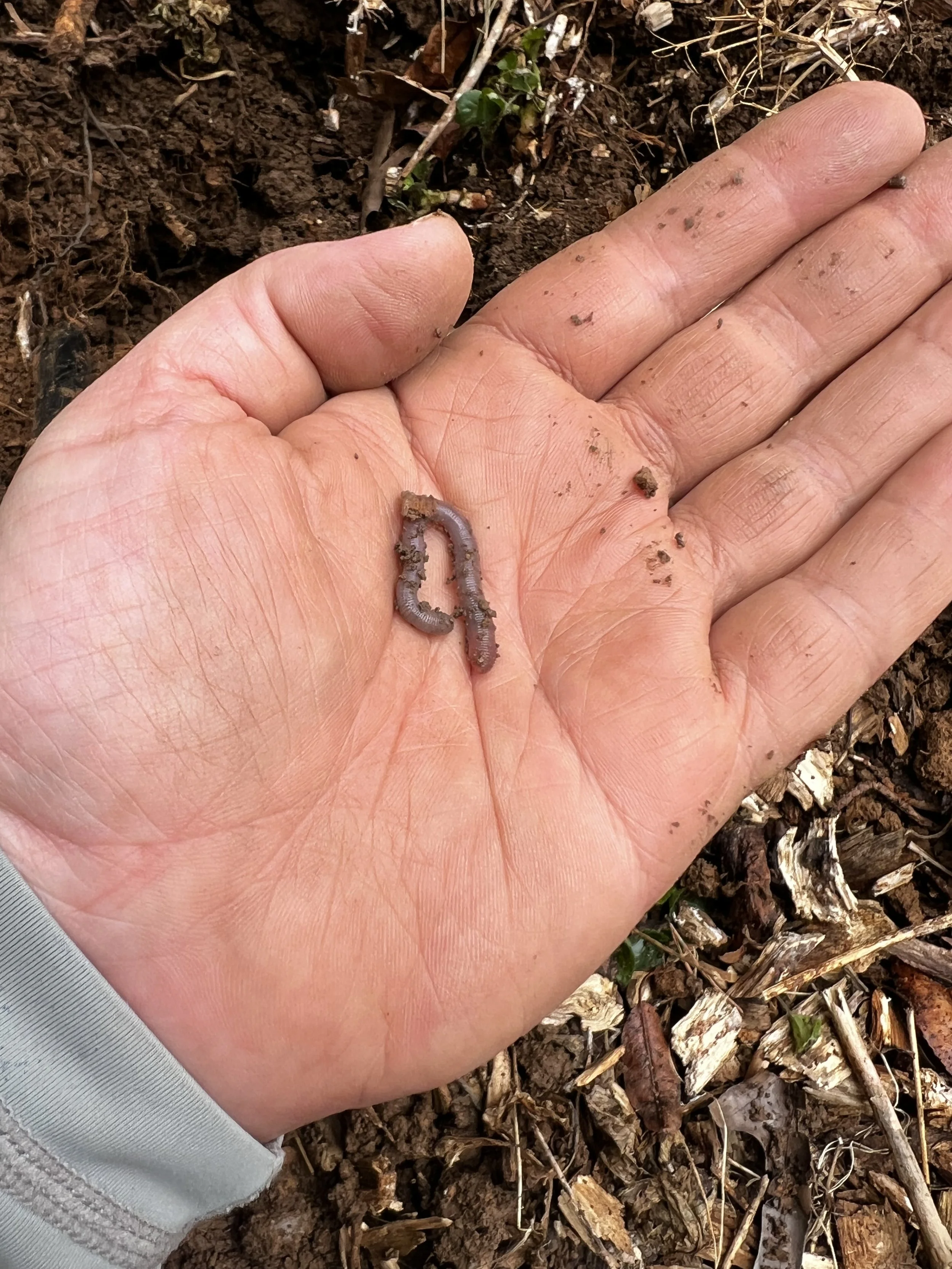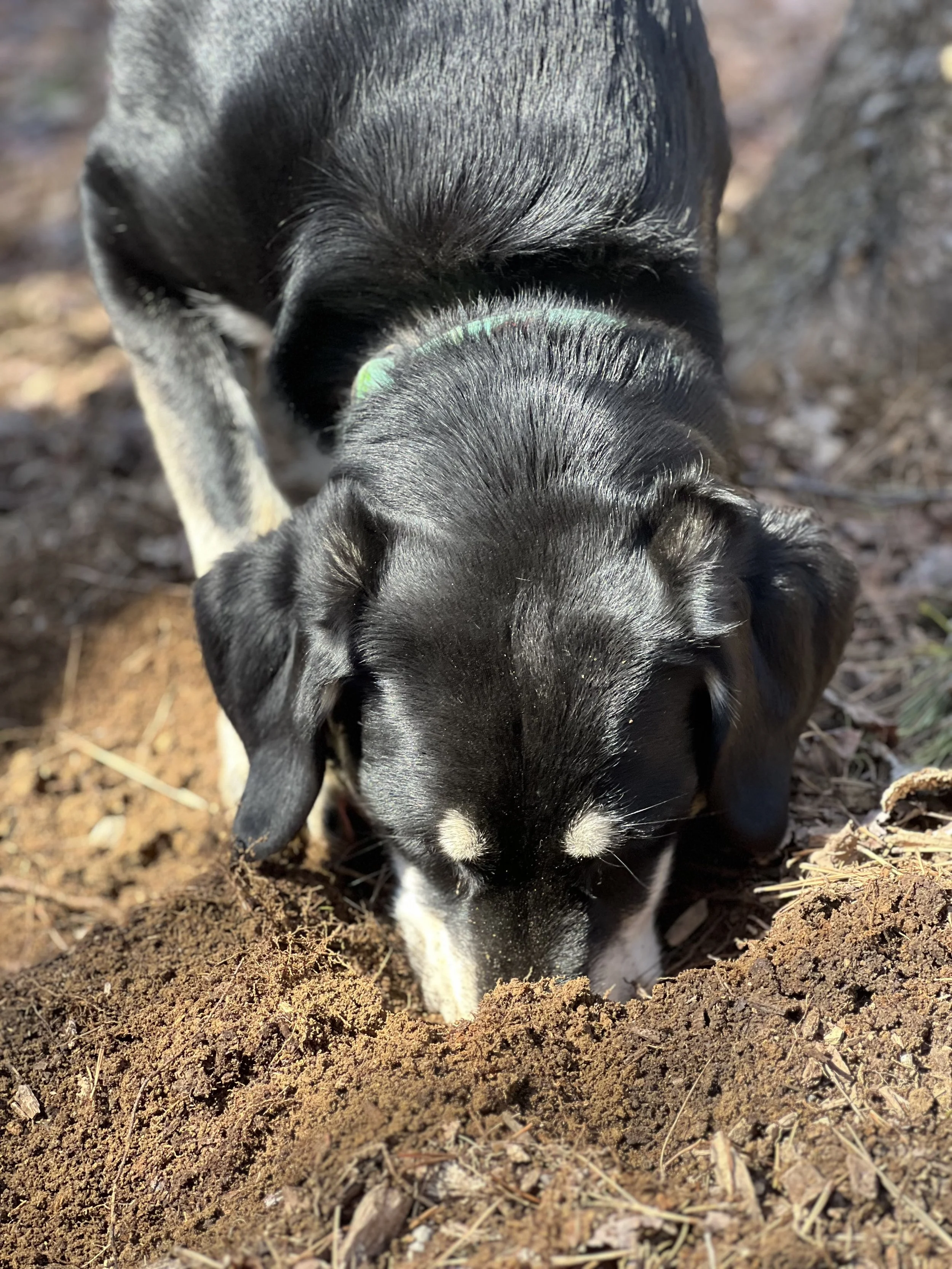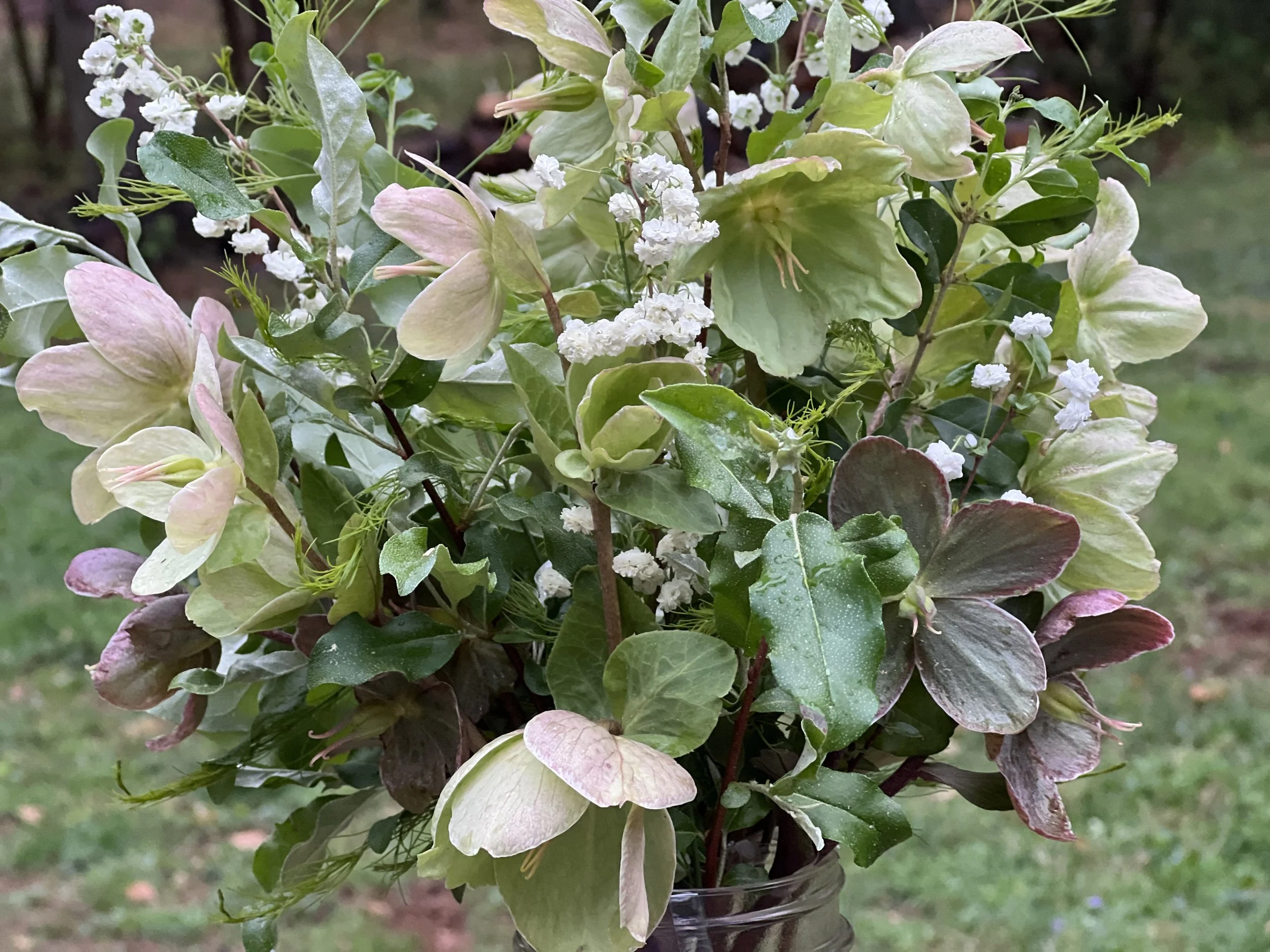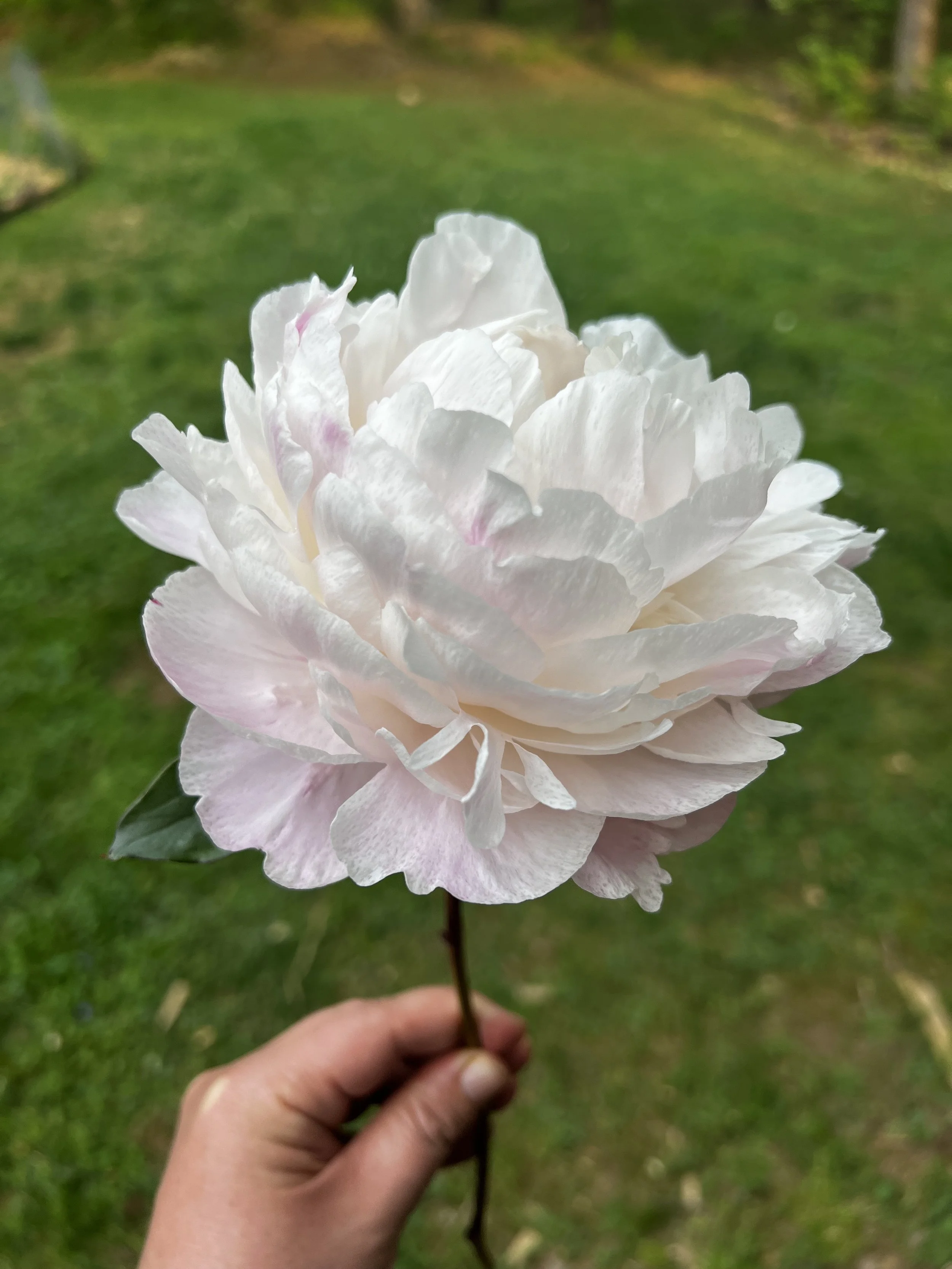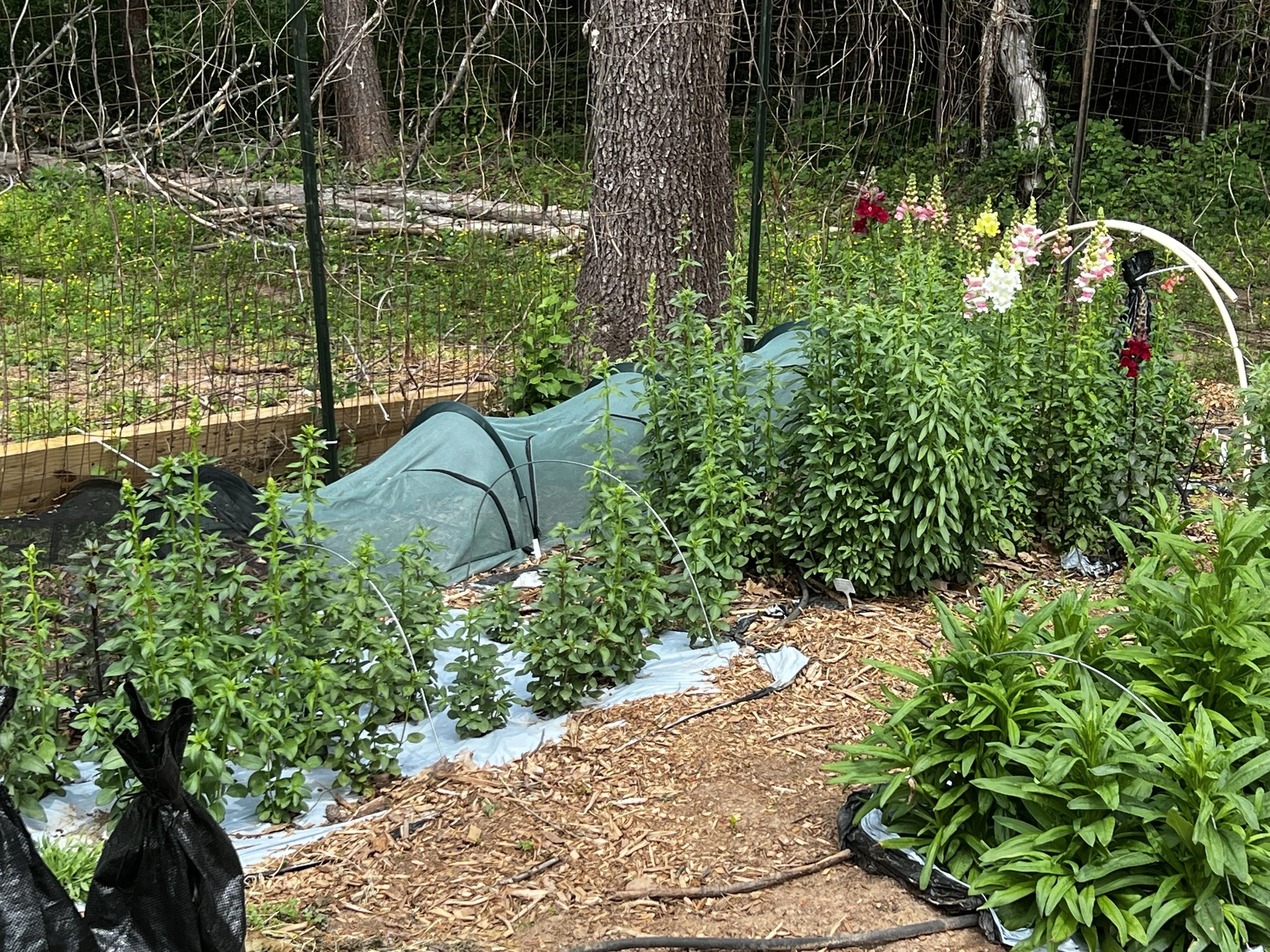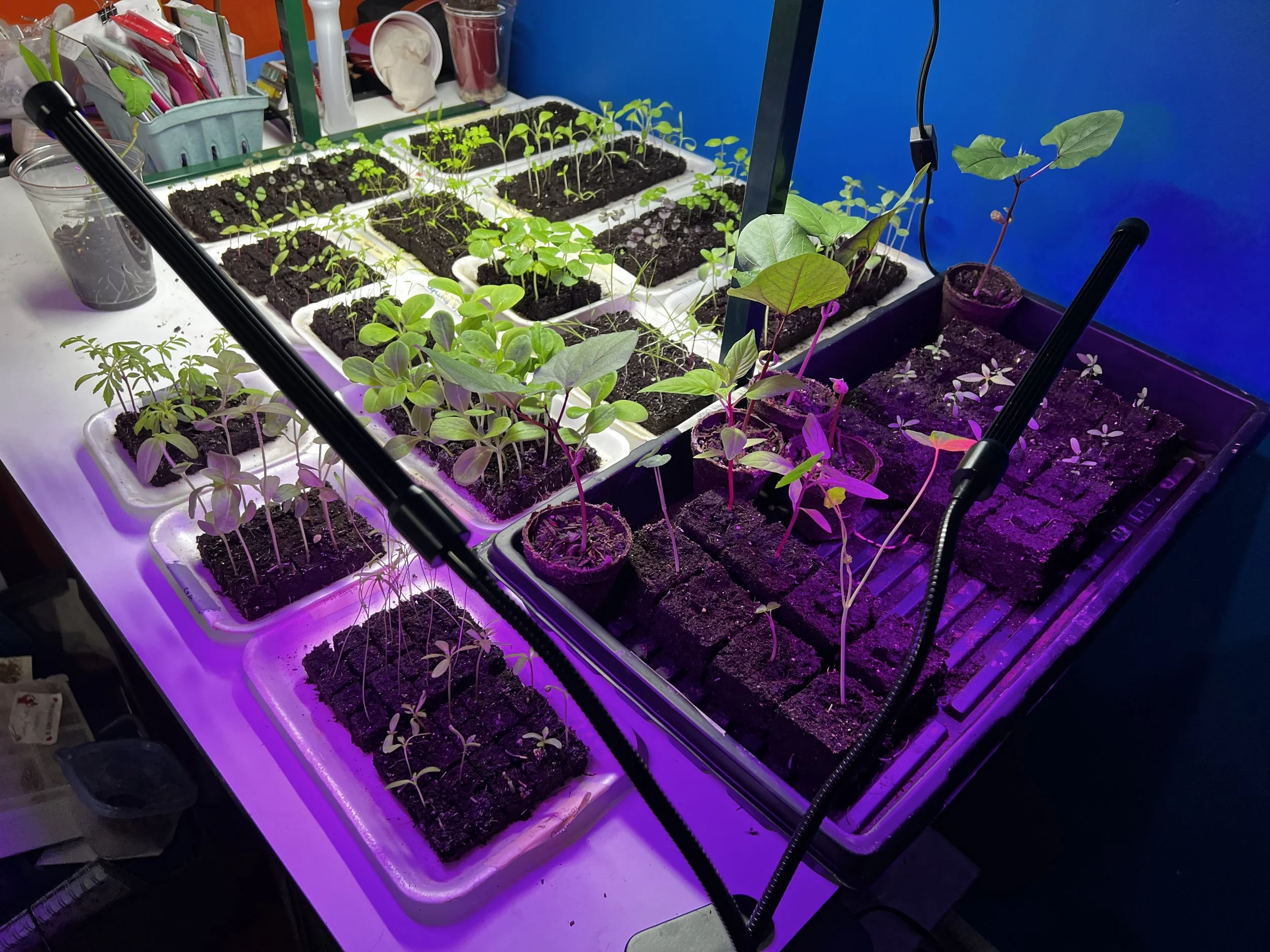Wonderful Worms
Have you ever thought about what’s under your feet, who you share the land with?
Aside from the countless bugs and microorganisms that just one cubic yard of soil can contain, there are also tons of earthworms in there as well! Each organism has an important role to play. This is just a bit about the role of earthworms.
Despite all of our accomplishments, we owe our existence to a six-inch layer of topsoil and the fact that it rains. - Paul Harvey
I recently read The Earth Moved: On the Remarkable Achievements of Earthworms by Amy Stewart. It was a birthday gift from my older sister along with two of Amy Stewart’s other books: Wicked Plants and Flower Confidential. As my birthday is in the dead of winter and I was already in the thick of planning out my growing season, ordering seeds, and dreaming of warmer weather, I couldn’t help but read this one first.
After spending the last few weeks digging in the dirt, getting ready for the growing season, and planting almost 1000 plants and seeds, I kept thinking about what I read about earthworms. I couldn’t help but stop what I was doing every time I came across one. I found myself playing with worms like I did when I was a kid!
This reignited something within me - a curious, fascinated part of my inner child that is totally entranced with these wiggly little creatures and all I want to do is share them with everyone! Just ask my family… they sat through a solid 20 minute car ride with me spouting earthworm facts and then, when we arrived home, showed them pictures of worms I read about.
Oligochaetologists are the scientists who study earthworms. Many of whom I read about in this book couldn’t understand why everyone isn’t as fascinated with earthworms as they are. I get it! Once you learn about them, it’s so mind blowing that you’ll (probably, I can’t speak for you) want to share earthworm facts with everyone!
A root-dwelling earthworm found when dividing my hydrangeas
Earthworms are notoriously difficult to study. They live underground. In fact, there are some species that have only just recently been discovered due to their sensitivity to vibrations. They quickly move away from any vibration felt in the soil - be that from a curious scientist or an excavator clearing land for new construction, the latter of which could very well be driving them to extinction. But since they are difficult to study, it can only be speculated that increased disturbance of the land has an effect on their population. But think about what else might be down there that humans haven’t discovered yet! All because we want more, bigger, better. Greed: it never ends well.
The earliest scientist to study earthworms was Charles Darwin, who spent hours in the fields around his home during his final years. He was the first to theorize that worms were intelligent enough to make decisions, which was driven by his observations of Nightcrawlers. These worms sound scary, but they’re the stereotypical earthworm: think of the classic images with robins pulling worms from the ground - that’s a Nightcrawler worm.
In his time studying these earthworms, Darwin discovered that when the Nightcrawlers collected debris (leaves, twigs, etc.) to bring into their burrows, they systematically gathered material and pulled it into their burrows in the same manner each time. They make decisions. Earthworms make decisions. They’re not just wiggling around all willy-nilly. They have reasoning and decision making skills.
Why is all of this important? The ground upon which we live, the soil itself, is an intact system. It is a living, breathing network of microorganisms that takes care of itself. Literally, it takes care of itself. As in, it’s better off left alone. And do you know what we’re not doing? Leaving it alone.
Greed is driving development of larger houses, larger subdivisions, larger cities, more roads, more everything that the land does not benefit from. Without all of the modern amenities, life would still find a way going on as it has for thousands of years. So not only are we polluting the air and water, but the ground is not benefiting from us, either.
The only “tilling” that happens around here is done by Bonny!
And a note for fellow gardeners: It’s estimated that, over the course of a year, a few dozen healthy earthworms can move almost twenty (20) tons of soil per acre. That’s a lot!
So if you have a garden, consider ditching the tiller and letting the earth take care of itself. It won’t be the instant gratification of turning the soil that is the stereotype of gardening and farming. But that’s the way it was intended to be: slow and purposeful.
Unless you have a REALLY good reason to do so, leave the soil to do its thing.
This is just brushing the surface of the fascinating world of earthworms. I didn’t even go into the different types of earthworms that you can find in any ordinary garden and what their roles are, or the fact that they have helped scientists learn even more about how the continents have shifted throughout the last few million years, or that there are some absolutely amazing earthworms being discovered, like the Archipheretima middletoni, or “Fried Egg Worm”, that was recently discovered in the Philippines:
Image Credit: iNaturalist
Nature is amazing. And we still don’t know everything about her!
One thing we do know, however, is how delicate the balance of the natural world is.
And that brings me to my PSA on sunscreen:
Why you should use Reef-Safe sunscreen at every beach!
According to a recent article in The Guardian Weekly magazine:
”Sunscreens contain chemical compounds, known as pseudo persistent pollutants, which block the sun's ultraviolet (UV) rays and can lead to bleaching and deformity in coral or a decrease in fish fertility.
The review looked at more than 110 publications linked to sunscreen, UV filters and their environmental and ecotoxicological impact.
One study calculated that, assuming that 50% washes off, if the average person applies 36g (1.27oz) of sunscreen with a reapplication of the same amount occurring after 90 minutes, a single beach with 1,000 visitors could lead to 35kg (about 77lbs) entering the ocean.”
I want to emphasize that we are all connected, that everything we do has a ripple effect and that our choices usually have an effect on others. The choices we make today have the potential to have an impact years from now.
Every day you live you make some impact on the world - and you can choose what sort of impact you make” - Dr. Jane Goodall
So if you’re going to the beach this year, protect yourself and the world around you. Choose a sunscreen that is rated “reef-safe sunscreen” and/or wear SPF rated clothing. If it’s going into the ocean, it will have an effect on ocean life. Make good choices!
April Farm Updates
April was a flurry of green goodness on the farm! Planting, growing, blooming, you name it, it happened! Spring has definitely sprung.
If you’re on the email list, you’ll know that the first Maker’s Market at Minerals and Mystics went really well! So well, in fact, that I’ll be back every month! More info is on the Where to Find Us page, so check it out if you’re curious!
The Heartwood Display System was launched, with some items now available online for the first time! Previously, I had only sold these items at local markets, but many people were asking for a link to purchase online or to send to a friend that would love them, so they’re in the shop now! If you’re interested in a discount and aren’t on the email list already, you’ll receive 10% off any order when you sign up for the newsletter.
This month, all of the spring flowers that were planted last month have either started to bloom or now have buds!
A bouquet of Hellebores and Bridal Wreath Spirea
We experienced our last frost here in Central Virginia, then near-freezing temperatures the following week. Everything seems to be ok - the hydrangeas look the worst but are showing signs of life again! Nature is resilient and amazing.
And the pollen… oh the pollen. Both of our pups have dark fur, which became dusted with yellow pollen this month, so it was baths for both in the kiddy pool.
It has been a very windy spring, with less rain than usual. That doesn’t phase the peonies, though, check out the beautiful Gardenia peony that graced us with their presence in late April:
The snapdragons have also been delighting us with their tall spires of blooms. The overwintered snapdragons are the first to bloom. The ones that were planted in March are still a few weeks away from blooming, but that was the plan! Now there will be a few weeks of snaps to enjoy!
The Snapdragons in bloom were planted last fall, while the ones on the left side were started in January, planted in March, and are set to bloom in May.
While the spring flowers are blooming away, the summer flowers are growing strong and have started their hardening off journey so they are ready to be planted in May. Check out all of these plant babies!
Thanks to soil blocks, I’m able to grow about 600 seedlings in this small space!
As the plants start to grow, so do the insects, both good and bad. The coral honeysuckle is currently infested with aphids. It’s the worst I’ve ever seen! They went from a few here and there one day to gobs of them (literally) on the new growth just a couple days later.
But never fear, nature will take care of it in time! I feel like this has become a hub of beneficial insects, like nature is using this infestation as a way to build an army of beneficial insects for the garden. I’ve seen ladybugs (in all their growth stages), aphid wasps, spiders, and Hoverfly worms, all munching on the aphids and having the time of their lives.
A blurry photo of a Hoverfly worm munching on the aphids. Nature photography is hard!
It’s so easy to see a problem, especially one that affects something you care about, and to immediately want to fix it. It’s natural. But also be sure to educate yourself! For example, if you saw this in your garden, would you know if it’s a good bug or a bad bug?
Image Credit: University of Wisconsin Dept. of Entomology
This is actually a baby ladybug! It looks like it could be a bad bug, but this little one will eat dozens of aphids on its way to adulthood, where it will grow into those cute little red bugs with black polka dots, and then continue to eat those pesky aphids.
And that Hover fly worm in the photo above that? It won’t harm the plant in any way, it will only munch on the aphids, form into a Hoverfly, and continue to help keep the garden pests under control.
I’ll be the first to admit that I’m still learning, asking questions, and making mistakes. Even with this infestation, panic arose and I immediately wanted to get rid of all of the aphids so they didn’t spread. I’m glad I reached out to my best friend, who is a Master Gardener, to ask her advice, because otherwise I would’ve been snipping away all of the affected branches on the honeysuckle. It will still survive, but now the rest of my garden will benefit even more because all of those beneficial insects now have a huge source of food and shelter!
The blooming season has just begun here at Giardino Foresta and I’m especially excited for these next few weeks, as one of my favorite flowers is blooming - Peonies!
The next three weeks or so will be absolutely filled with peonies. I’m so dang excited.
They were the showstoppers in Mother’s Day bouquets last year and it looks like their timing will be right for Mother’s Day again this year! So if you’ve ordered a Mother’s Day bouquet, thank you! You’re in for a real treat, because these peonies are stunning. I can’t wait for you to see them in person!
Thank you for reading through! Next time I’ll be sharing about a really special tree in our yard that has played a significant role in the story of Giardino Foresta. Take care!

